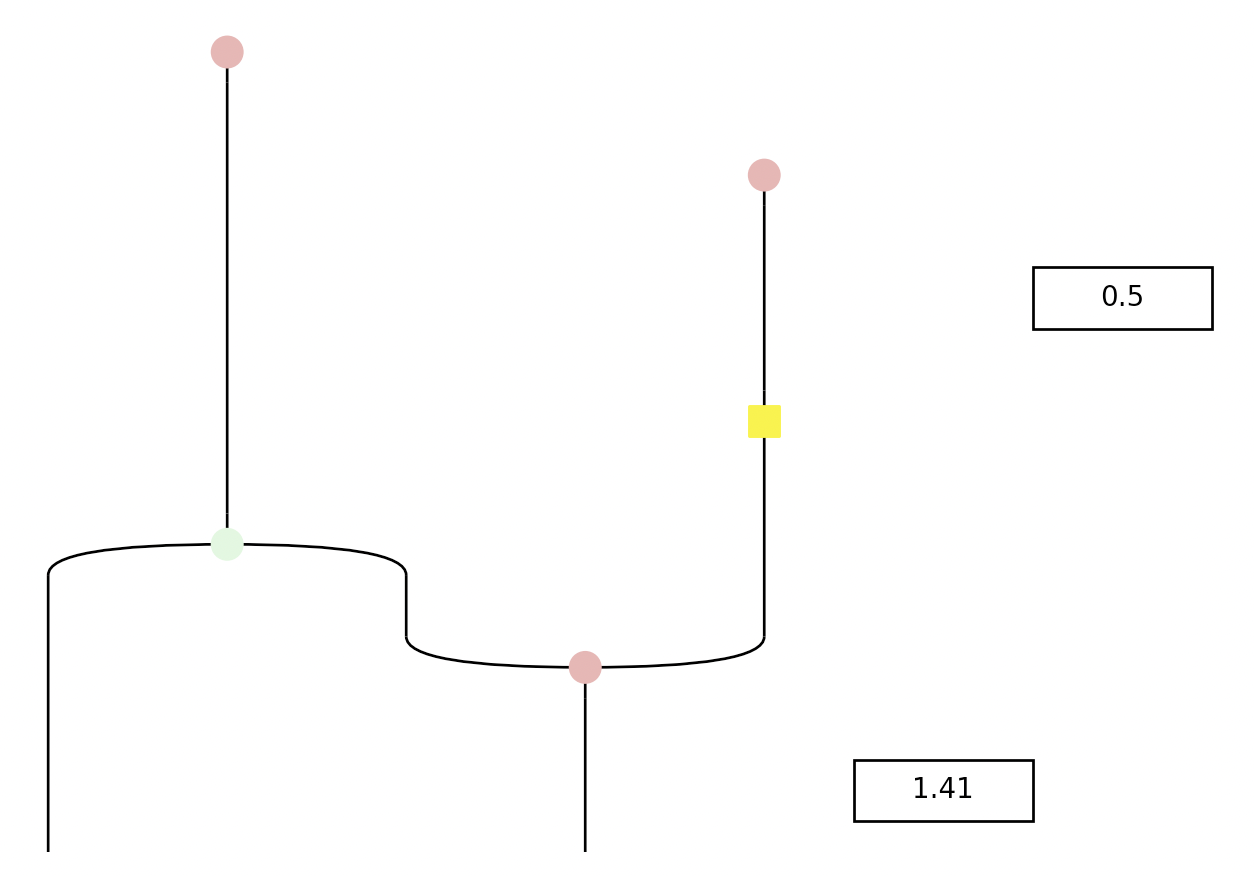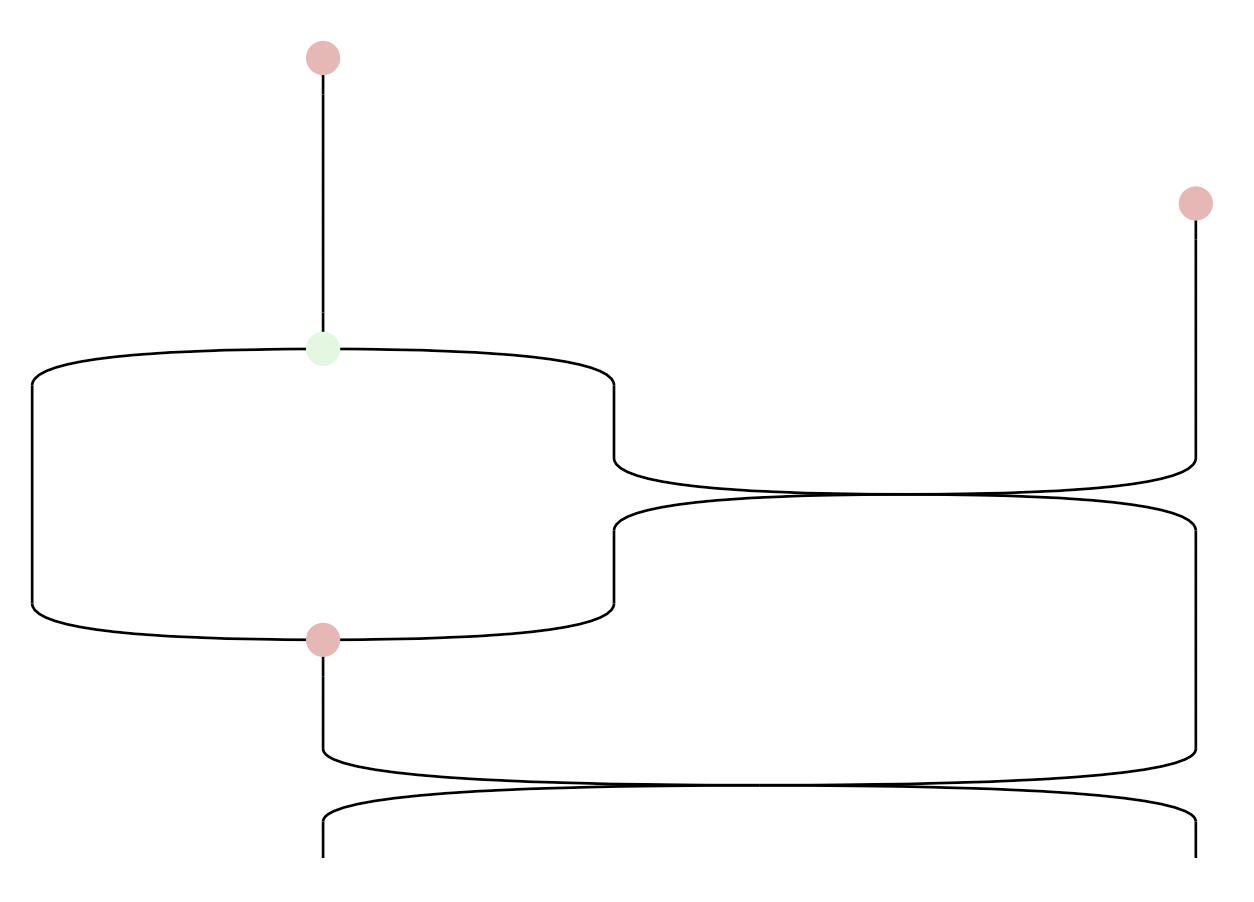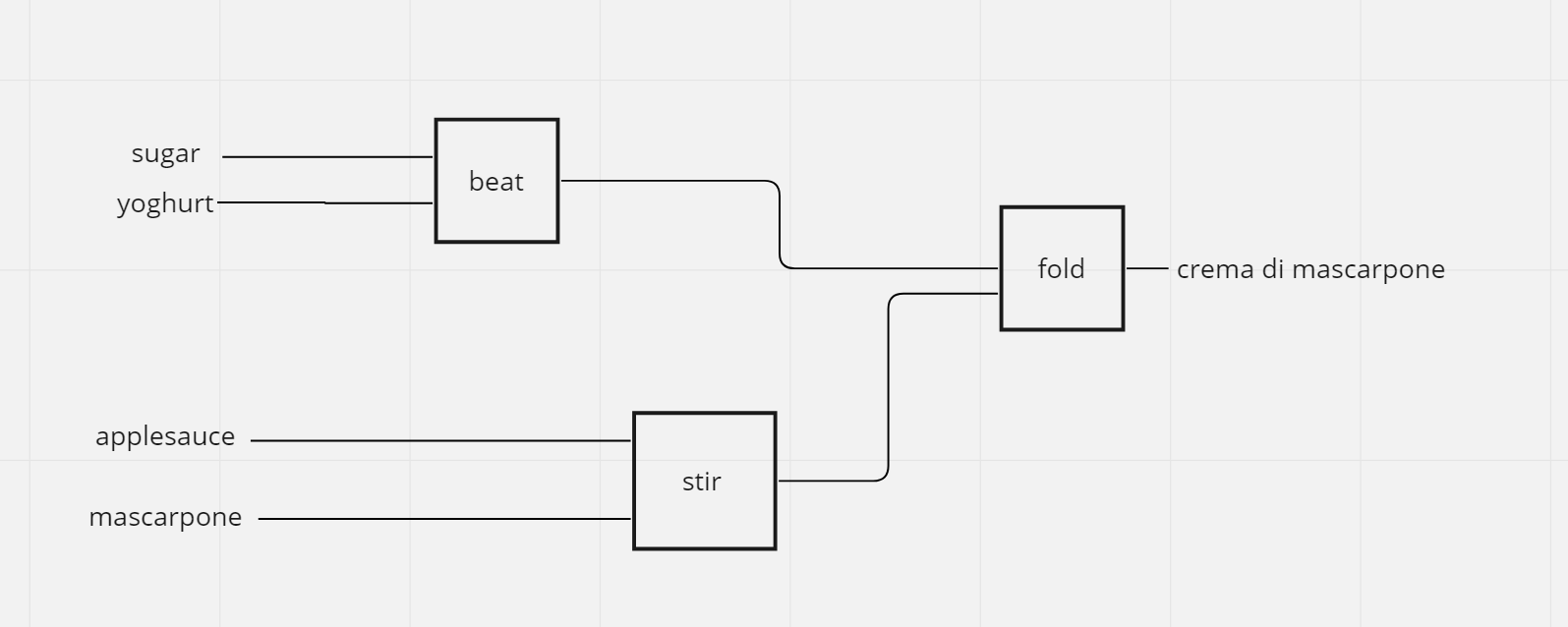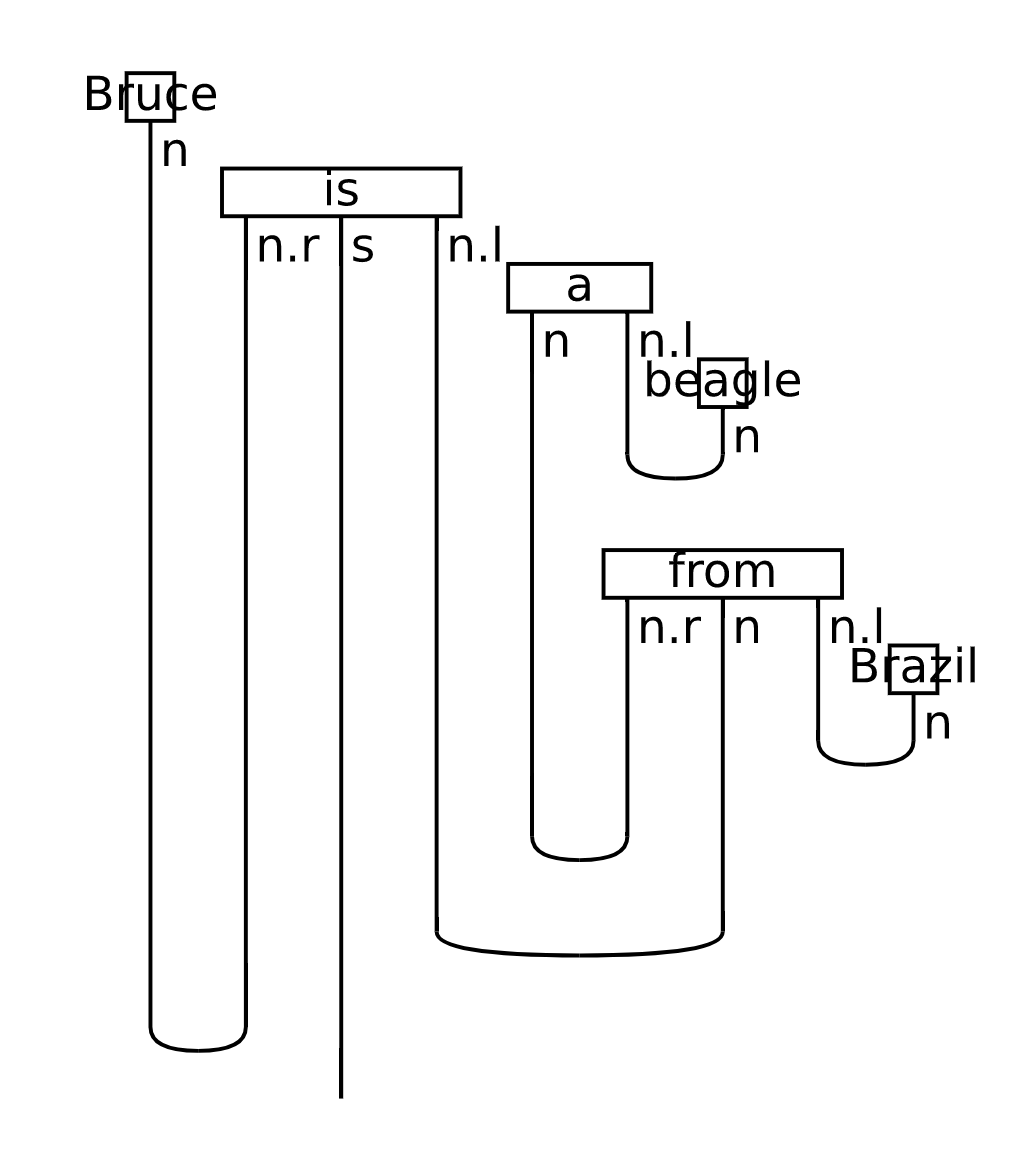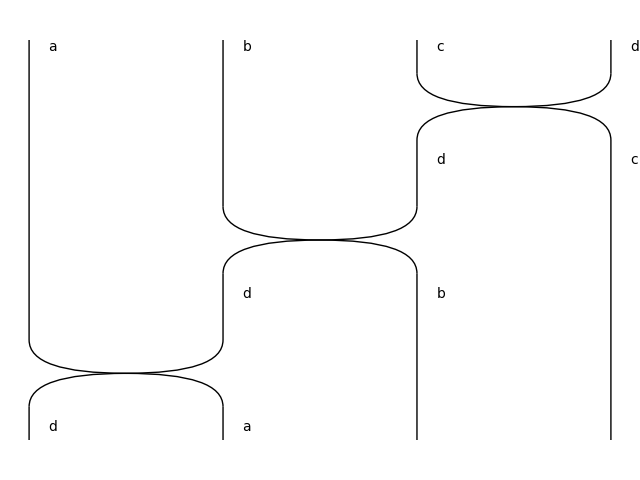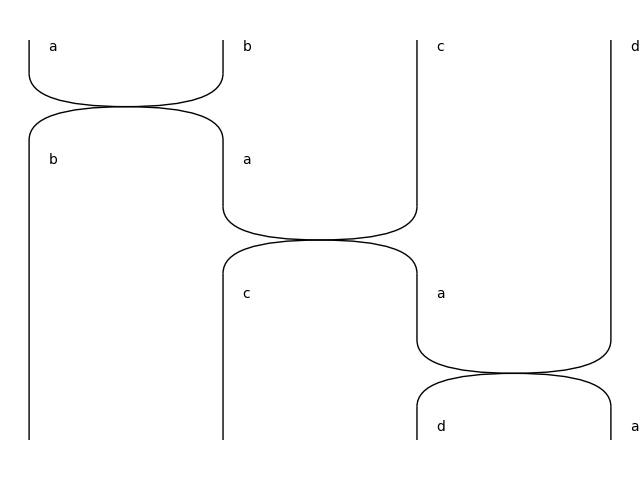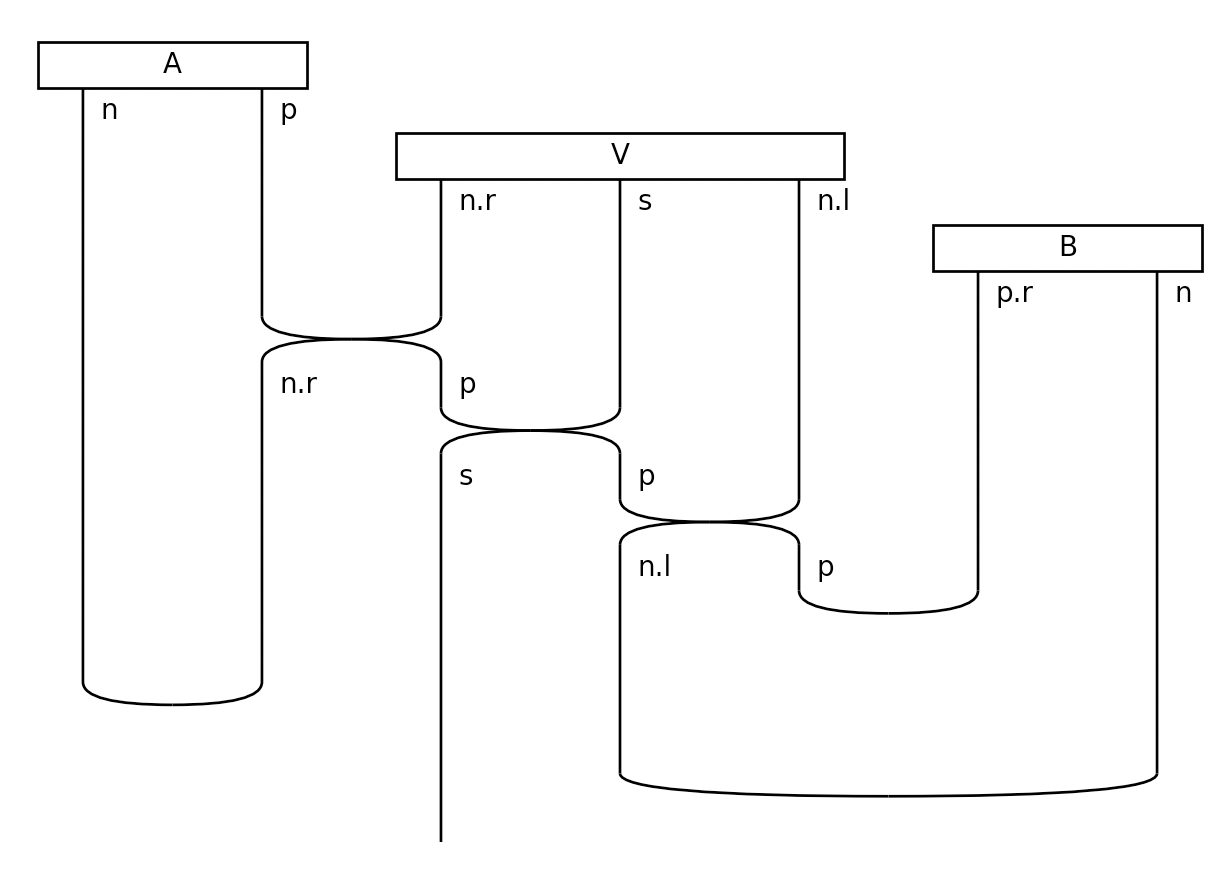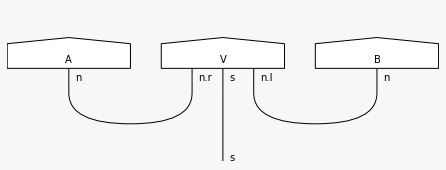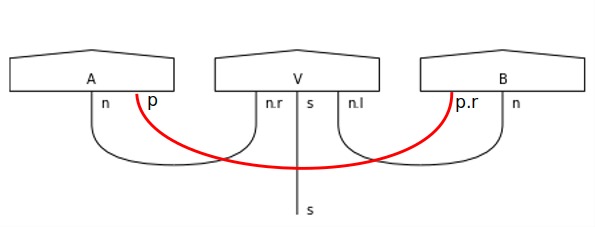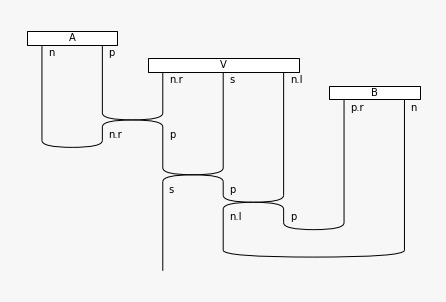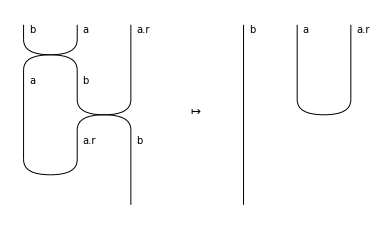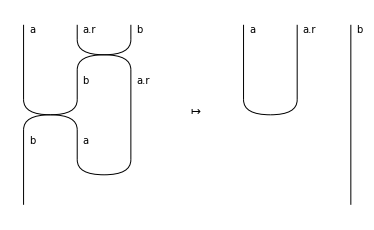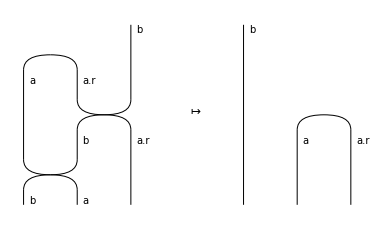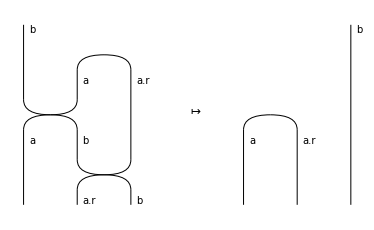DisCoPy is a Python toolkit for computing with string diagrams.
- Organisation: https://discopy.org
- Documentation: https://docs.discopy.org
- Source code: https://github.com/discopy/discopy
- Paper (for applied category theorists): https://doi.org/10.4204/EPTCS.333.13
- Paper (for quantum computer scientists): https://arxiv.org/abs/2205.05190
DisCoPy began as an implementation of DisCoCat and QNLP. This has now become its own library: lambeq.
- an
Arrowdata structure for free dagger categories with formal sums, unary operators and symbolic variables from SymPy - a
Diagramdata structure for planar string diagrams in any (pre)monoidal category in the hierarchy of graphical languages (with braids, twists, spiders, etc.) - a
Hypergraphdata structure for string diagrams in hypergraph categories and its restrictions to symmetric, traced, compact and Markov categories - methods for diagram composition, drawing, rewriting and
Functorevaluation into:- Python code, i.e. wires as types and boxes as functions
- tensor networks, i.e. wires as dimensions and boxes as arrays from NumPy, PyTorch, TensorFlow, TensorNetwork and JAX
- an implementation of categorical quantum mechanics interfacing with:
- tket for circuit compilation
- PyZX for optimisation with the ZX calculus
- PennyLane for automatic differentiation
- an implementation of formal grammars (context-free, categorial, pregroup or dependency) with interfaces to lambeq, spaCy and NLTK
This example is inspired from Pawel Sobocinski's blog post Crema di Mascarpone and Diagrammatic Reasoning.
from discopy.symmetric import Ty as Ingredient, Box as Step, Diagram as Recipe
egg, white, yolk = Ingredient("egg"), Ingredient("white"), Ingredient("yolk")
crack = Step("crack", egg, white @ yolk)
merge = lambda x: Step("merge", x @ x, x)
# DisCoPy allows string diagrams to be defined as Python functions
@Recipe.from_callable(egg @ egg, white @ yolk)
def crack_two_eggs(left_egg, right_egg):
left_white, left_yolk = crack(left_egg)
right_white, right_yolk = crack(right_egg)
return (merge(white)(left_white, right_white),
merge(yolk)(left_yolk, right_yolk))
# ... or in point-free style using parallel (@) and sequential (>>) composition
assert crack_two_eggs == crack @ crack\
>> white @ Recipe.swap(yolk, white) @ yolk\
>> merge(white) @ merge(yolk)
crack_two_eggs.draw()pip install discopyIf you want to see DisCoPy in action, check out the QNLP tutorial!
We're keen to welcome new contributors!
First, read the contributing guidelines. Then get in touch on Discord or open an issue.
If you used DisCoPy in the context of an academic publication, we suggest you cite:
- G. de Felice, A. Toumi & B. Coecke, DisCoPy: Monoidal Categories in Python, EPTCS 333, 2021, pp. 183-197, DOI: 10.4204/EPTCS.333.13
If furthermore your work is related to quantum computing, you can also cite:
- A. Toumi, G. de Felice & R. Yeung, DisCoPy for the quantum computer scientist, arXiv:2205.05190
If you use any of the recent features (e.g. Hypergraph) you should also mention:
- A. Toumi, R. Yeung, B. Poór & G. de Felice, DisCoPy: the Hierarchy of Graphical Languages in Python arXiv:2311.10608



